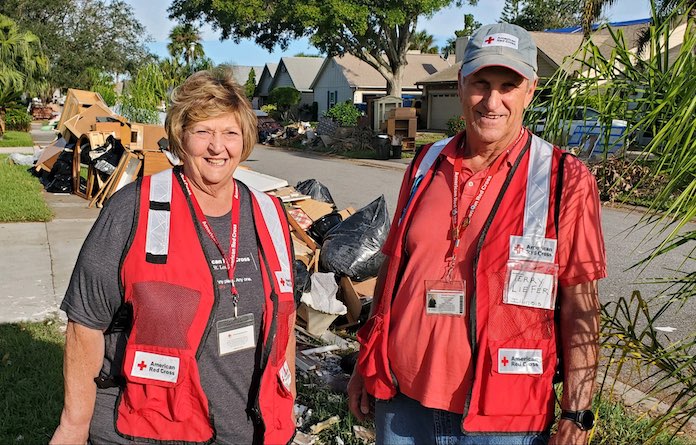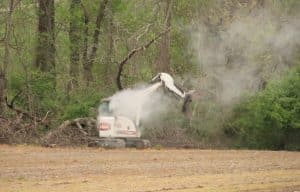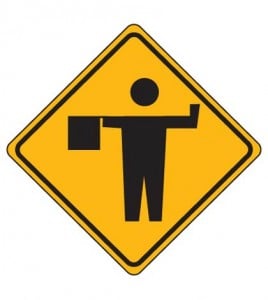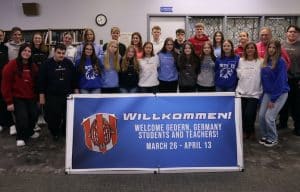Helping after disaster strikes

With much of the aftermath of Hurricane Ian still left to recover from, the American Red Cross continues to face a shortage in volunteers to help both in Florida and nationwide.
Joe Zydlo, Regional Communications Manager for the American Red Cross of Missouri and Arkansas, said the organization relies almost entirely on volunteer support for its regular operations.
According to Zydlo, about 10 percent of Red Cross staffing consists of employees like him while the remaining 90 percent consists of volunteers.
“The Red Cross, as an organization, has been made up mainly of volunteers for well over 100 years,” Zydlo said. “So, if we don’t have those volunteers, we certainly don’t have the operation that we have today.”
With so much responsibility placed on volunteers, the shortage the Red Cross has experienced over the last few years has placed a strain on operations.
Zydlo said the shortage seems to be similar to shortages experienced by other non-profits in the country.
“The last couple of years, it’s been challenging because of COVID-19. The pandemic, we lost a lot,” Zydlo said. “I think we’re like many organizations, many non-profit organizations that rely on volunteers. We all took a hit with our staff and we’re trying to build that staff back up.”
Zydlo said volunteers with the Red Cross are able to perform a variety of services, with the organization working with the volunteer to find the best fit for them.
Some of the more obvious examples of efforts by Red Cross volunteers are visible at the scene of a disaster.
Justine and Terry Liefer of Red Bud are Red Cross volunteers who visit such sites.
Justine said she and her husband have contributed to Red Cross disaster relief since Hurricane Harvey in 2017.
Since then, the couple have been involved in about 20 deployments for various disaster relief efforts across the country, with each deployment requiring a typical two-week commitment.
Justine described the variety of volunteer opportunities people can contribute to within the scope of on-site disaster relief – including shelter management and damage assessment – and how Red Cross employees overseeing the relief effort work to place volunteers where they’re most comfortable.
Justine also spoke about her and her husband’s volunteering more broadly, describing her experience helping others as positive but still upsetting given their unfortunate situation.
She also described the especially upsetting aftermath of Hurricane Ian that she worked in recently.
“This one is really a devastating event. This one is by far the worst we’ve seen,” she said. “But it is rewarding to know, that, you know, it makes you appreciate what you have. It’s rewarding to go where you can give back, and that’s why we do it.”
Hundreds of homes in central Florida are still submerged following the historic rainfall Hurricane Ian dropped nearly two weeks ago.
The death toll from this hurricane is above 100 in Florida, with other deaths reported in North Carolina, Virginia and Cuba.
It was the third-deadliest storm to hit the U.S. mainland this century behind Hurricane Katrina and Hurricane Sandy.
For those still looking to volunteer but less inclined to travel, the Red Cross also seeks volunteers to serve as blood drive ambassadors.
Dawn Porter of Red Bud started serving as a blood drive ambassador last year, working to keep the organization’s local blood drives running smoothly.
The Red Cross has also experienced a shortage of blood donors since the pandemic started – though Porter said donor turnout locally has slowly been improving.
She also spoke to the importance volunteering and blood donating can have, referencing a statistic from the Red Cross describing just how much blood it collects for the entire country.
“You just never know when your donation is going to save someone’s life, and it is going to,” Porter said. “They’re collecting and distributing 40 percent of the entire nation’s blood supply, so I just think that people should be proactive in giving blood. It might be routine, but I think sometimes that’s great.”
Beyond the disaster relief and blood drive work that volunteers like the Liefers and Porter do, Zydlo said there are plenty of areas where those who want to help can offer services, and the Red Cross is happy to help find an appropriate place for them.
Zydlo said the role and importance of the organization’s volunteers harkened back to American Red Cross founder Clara Barton’s vision.
“That’s what I think Clara Barton was thinking, was, ‘Hey, what can we do? How can we volunteer? How can we serve our community to help when situations arise?’” Zydlo said.
Those interested in volunteering for the Red Cross can learn more at redcross.org.






